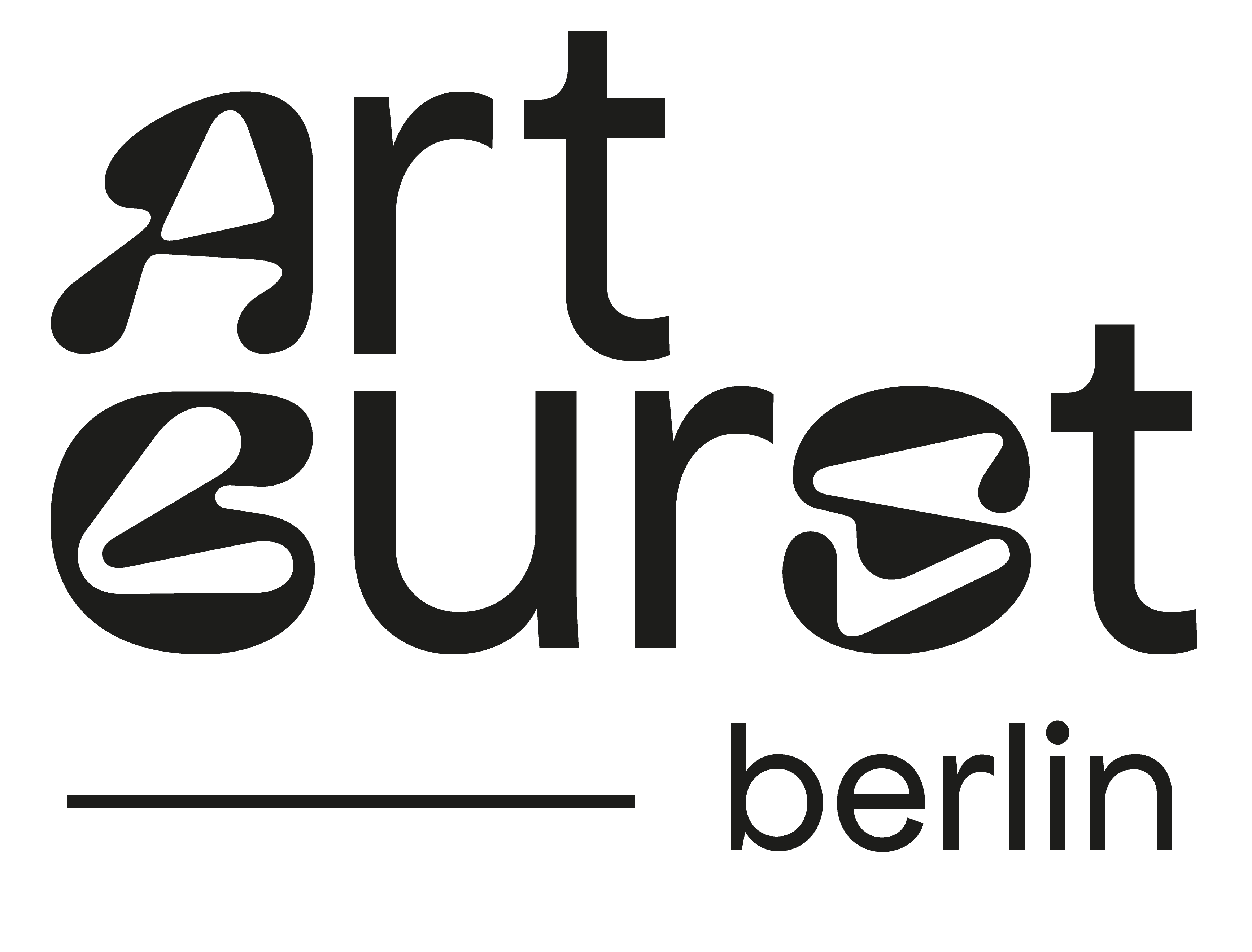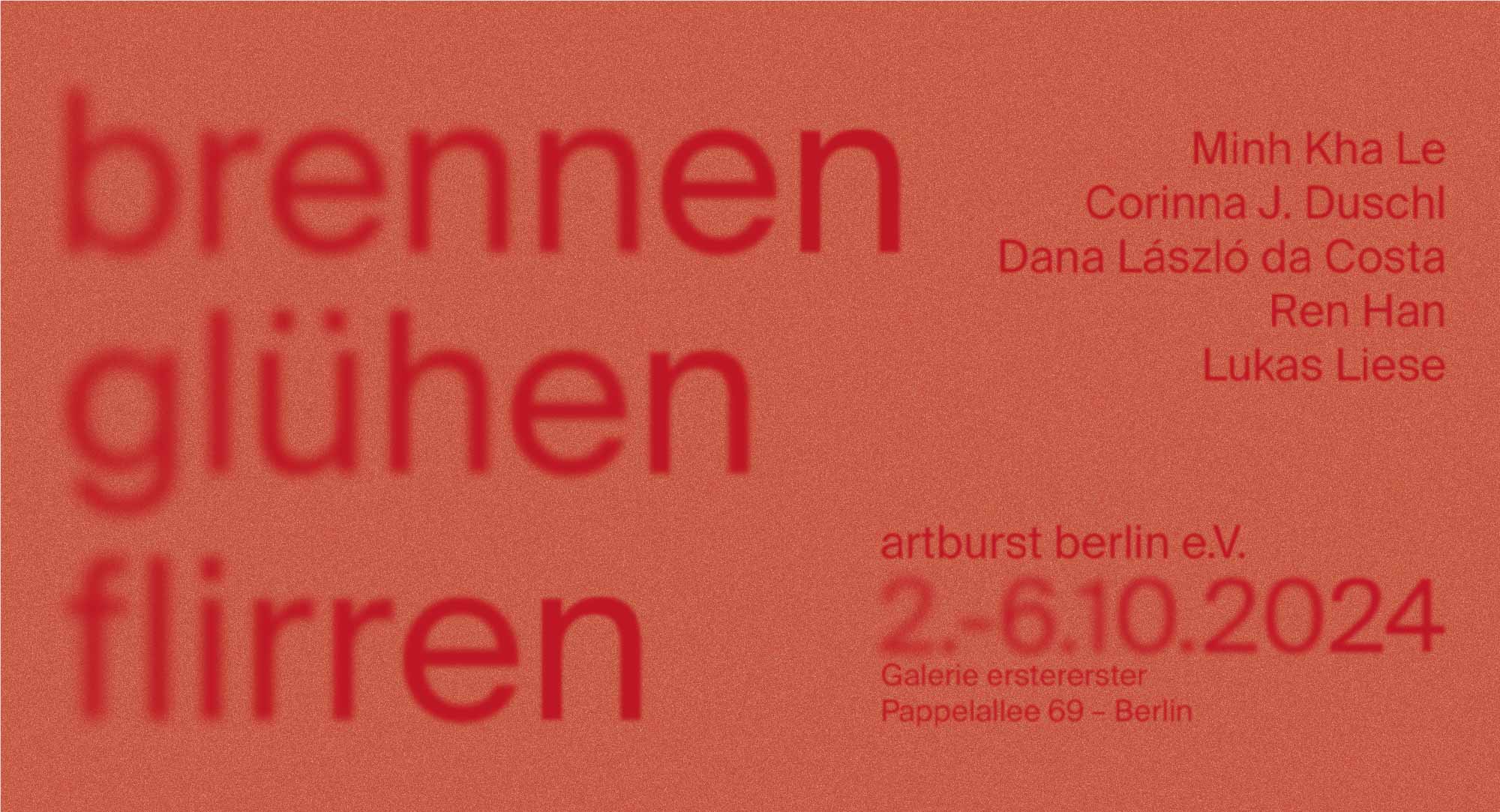
Location
Galerie erstererster
Pappelallee 69, 10437 Berlin
Date
02.–06. October 2024
Program
Opening hours : Wednesday – Sunday 12 – 7 p.m.
Opening 02.10.2024 from 7 p.m.
Guided tour: Thursday, 03.10., 2 p.m.
Guided tour: Saturday, 05.10., 3 p.m. (guided tour for everyone - in plain language)
Guided tour: Sunday, 05.10., 4 p.m. (guided tour for everyone - in plain language with audio description)
The program is free of charge.
Artists
Minh Kha Le
Corinna J. Duschl
Dana László da Costa
Ren Han
Lukas Liese
_______________
‘Heat’ is the overarching topic of artburst berlin e.V.’s upcoming two-part exhibition project: While the first show “brennen glühen flirren” (“burning glowing flickering”) presented from October 2nd to 6th at erstererster in Berlin Prenzlauer Berg centers on the causes and the physical sensation of ‘heat’, the follow-up show in Spring 2025 will examine how we as humans navigate its consequences (exact dates following soon). As diverse as the associations to the keyword ‘heat’ might be, so too were the submissions we received in response to our Open Call. With Corinna J. Duschl, Ren Han, Dana László da Costa, Lukas Liese and Minh Kha Le, we are delighted to present five select positions that explore ‘heat,’ each from a different and unique angle.
In the paintings of Minh Kha Le flames sprawl like vines; abstract forms fall into and upon one another. Occasionally, a piece of unpainted canvas flashes out between the vibrant colors. Yet the blank spaces do not offer any respite, instead they hang in the landscapes like stumbling blocks. The voids are small islands in the picture, that perhaps have already been consumed by the flames, or that might have been spared by the fire. The shifting shapes and colors seem to take on organic forms – sometimes appearing like fleeing animals, sometimes like the tip of a flame, making it hard to tell the spectacle’s victims from its cause. Next to Minh Kha Les' expressive brushstrokes, Ren Han 's “Disaster Landscapes” appear cool and composed. For the works on show, the artist used a jigsaw to carve fine hatchings into the surface of purple carbon paper – a material initially employed as an ink carrier for mechanical prints which today is usually only used as tracing paper. Instead of working with printing plates, however, Ren Han turns the carbon paper itself into an image carrier. Carbon paper, once relied on for the mechanical reproduction of texts, is a relic of a pre-digitalized world, but also a harbinger of the information age. The images that Ren Han scratches into the color surface are abstract depictions of volcanic eruptions. As natural disasters that are still beyond human control, Ren Han turns them into a symbol of the tense relationship between nature and technology, salvation and unbridled violence.
Sculptor Lukas Liese’s work, too, is concerned with natural disasters and global warming, but in a more secondary way. In “Cousin Maria (Heat)”, he reflects on his relationship with his epynmonous relative who lives in the US and whose radicalization into a climate change denier he has been following on social media for several years. Liese, who traditionally works with marble, once again makes use of the art-historically charged material for this work. At times as an interested observer, at times as a participant in the debates, he follows the often contradictory posts of his cousin, who on the one hand does not believe in climate change, but on the other expresses sympathy online for those affected by natural disasters and calls for thoughts and prayers. Symbolizing the ‘heated’ discussions, the stone slab emits heat into the exhibition space. While marble is generally perceived as a cool material, the gray surface of the work functions as a radiator and emits heat into the exhibition space – symbolizing the ‘heated’ online debates. The contrast between what is seen and what is felt creates a cognitive dissonance. Corinna J. Duschl , in contrast, paints a thoroughly loving image of family relations in her sculpture “Kindling”. The title is a wordplay on ‘kindle’ as in spark, the term ‘kin’ for family, and the German word ‘Kind’ ('child'), hinting at the topic of the work: the artist's relationship with her deceased grandmother. A pair of gold earrings bequeathed to her by the latter formed the basis for the work. Out of beeswax, Duschl molded exact copies of the earrings. Arranged in various constellations, the small round elements are transformed into wax candles that slowly melt and burn down in the exhibition space. Through this work, the artist reflects on how she and the grandmother assign value to the gold earrings for opposing reasons: While for the elder, the initial reason for gifting her grandchild the jewelry lies in its material worth, the recipient is completely indifferent to this – for her, it is all about the emotional value the jewel holds: the memory of a loved one.
The heavy, dyed wool piece by Dana László da Costa, the fifth position in the exhibition, does not only convey a feeling of heat on a sensory level, but also addresses a very specific issue that stands in direct relation with the show's main topic: for her work “Ibirapitanga” (from the Tupí-Guaraní languages: 'red tree'), the Brazilian-born artist used a plant-based color pigment as dye that was extracted from 'Pau-Brasil' – the tree native to Brazil that once gave the country its name. The Portuguese conquest of the land brought with it the exploitation of natural resources. Greed for the valuable brazil-wood that is so central to the country’s identity has caused the Pau-Brasil to become an endangered species. Since the beginning of the colonization of South-America, extractivism and land grab are and continue to be the main cause for the destruction of the unique vegetation on the continent that is so crucial to our planet’s survival.
Through the contraposition of works of art that, in form and essence, might stand in stark contrast to one another, highlight the various connotations, effects and layers of the meaning of heat as both a palpable entity and a metaphor. What constitutes ‘heat’ might at times appear antithetical: Global warming not only results in bush fires but also in floods and hurricanes, underscoring the complexity of the phenomenon. And interpersonal ‘heat’ can be an indication of either attraction or conflict, e.g. when we describe someone as ‘hot’ or, in contrast, talk of a ‘fired-up debate’ as a euphemism for a fight. The contradictory character of the ways in which we perceive ‘heat’ is the connecting element in the artworks presented in artburst’s exhibition at erstererster .
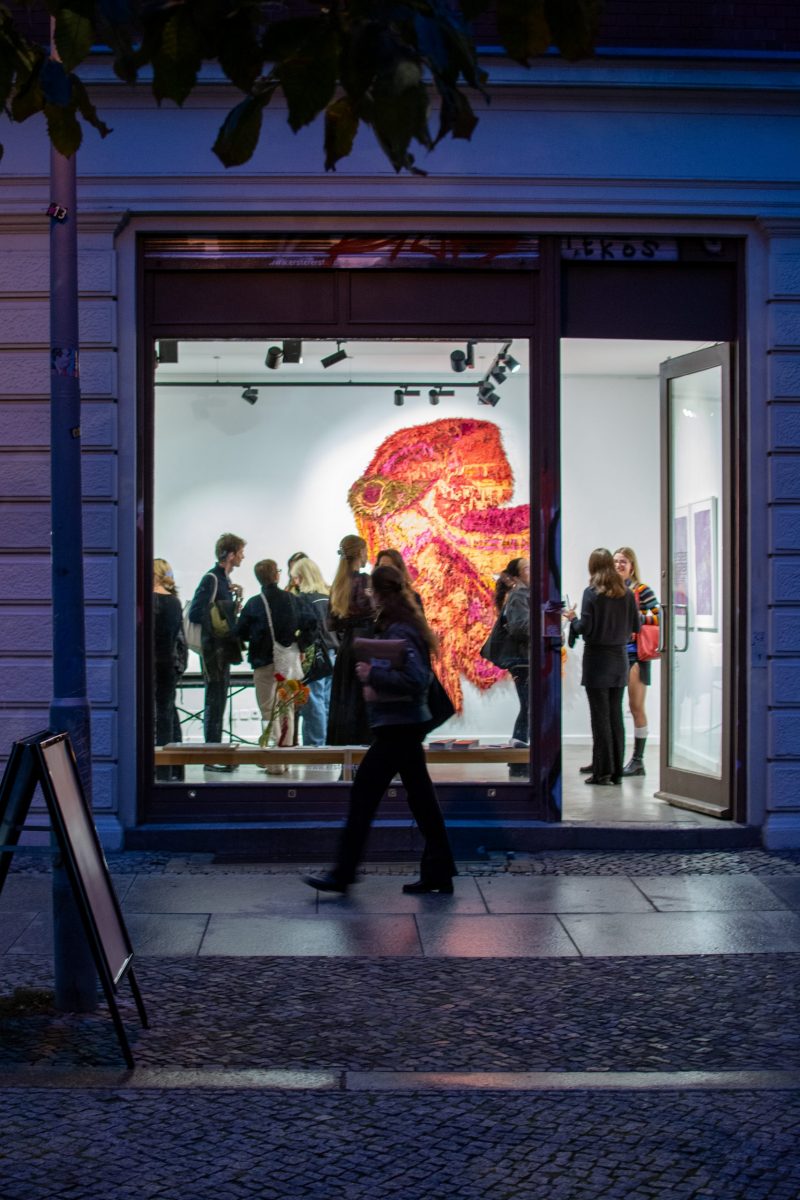
© Jannes Jaeger
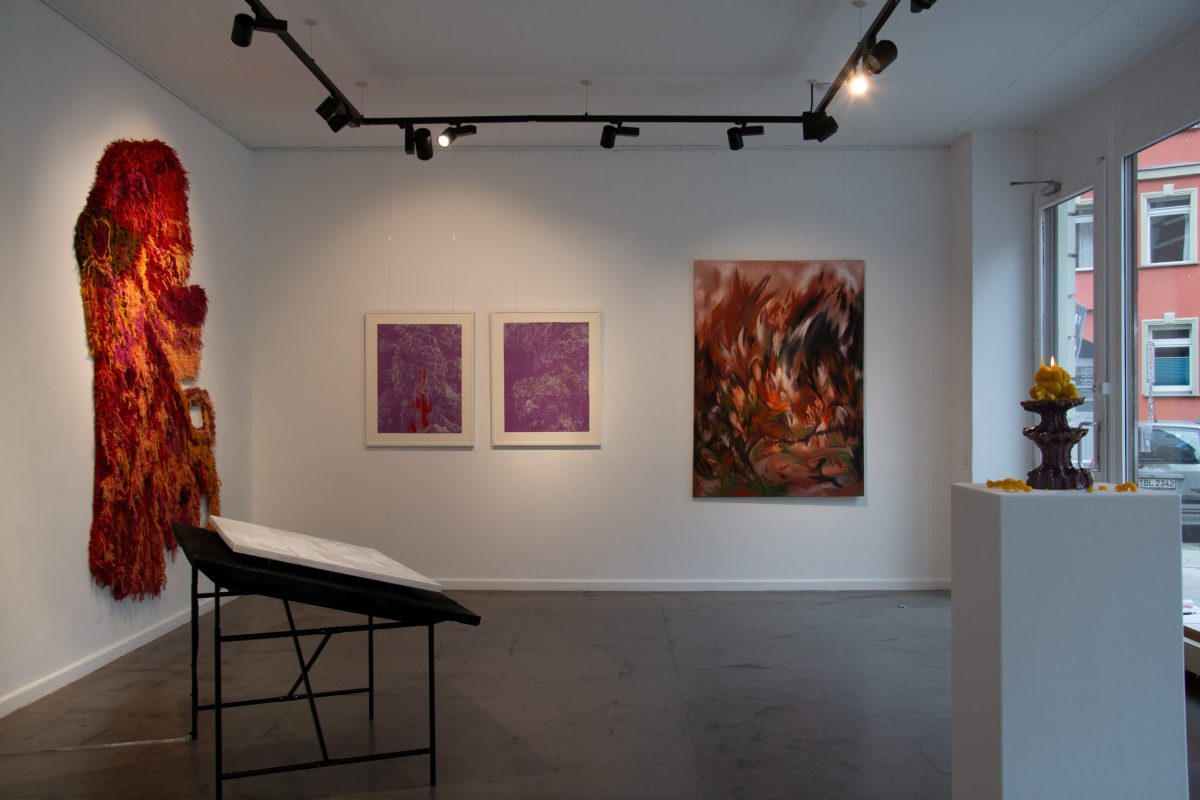
© Jannes Jaeger
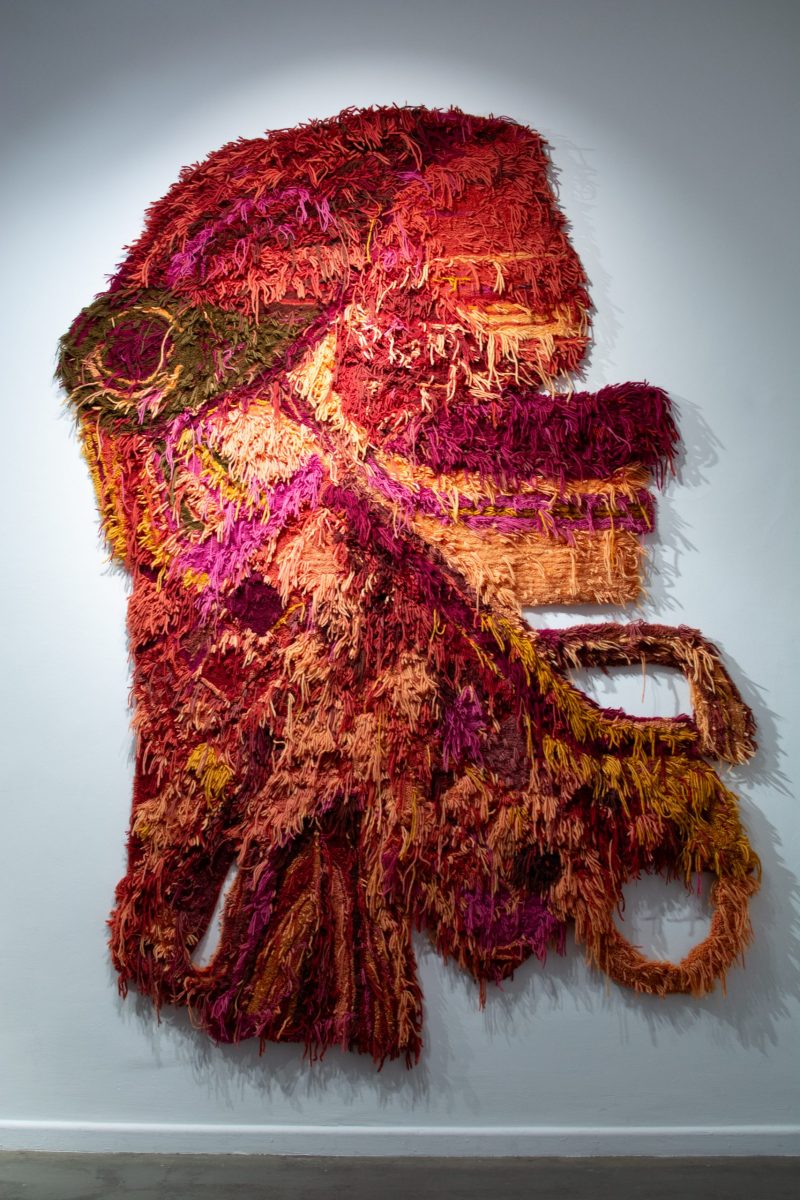
Foto: Jannes Jaeger
Dana László da Costa, Ibirapitanga, tufted wool dyed with Brazilwood 200 cm x 280 cm, 2022
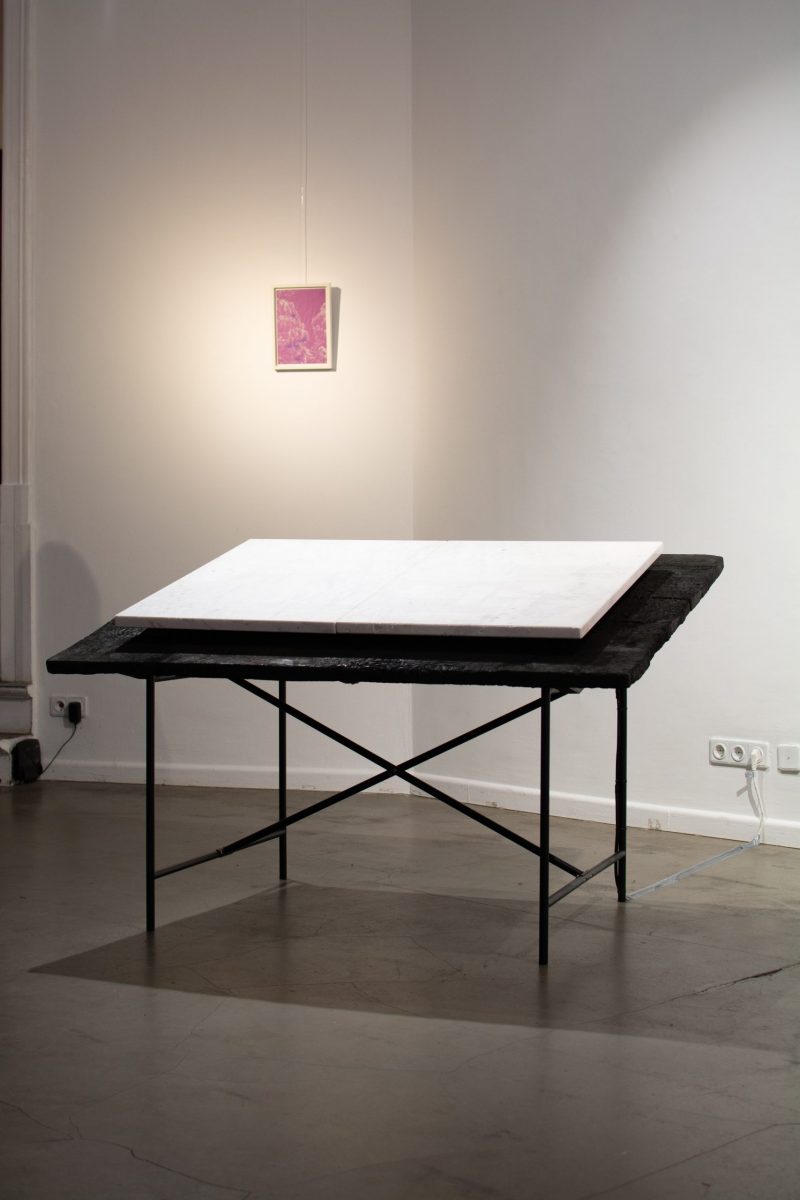
Foto: Jannes Jaeger
Lukas Liese, Cousin Maria, carrara marble, infrared heating system, heat 120 cm x 75 cm x 4 cm, 2023
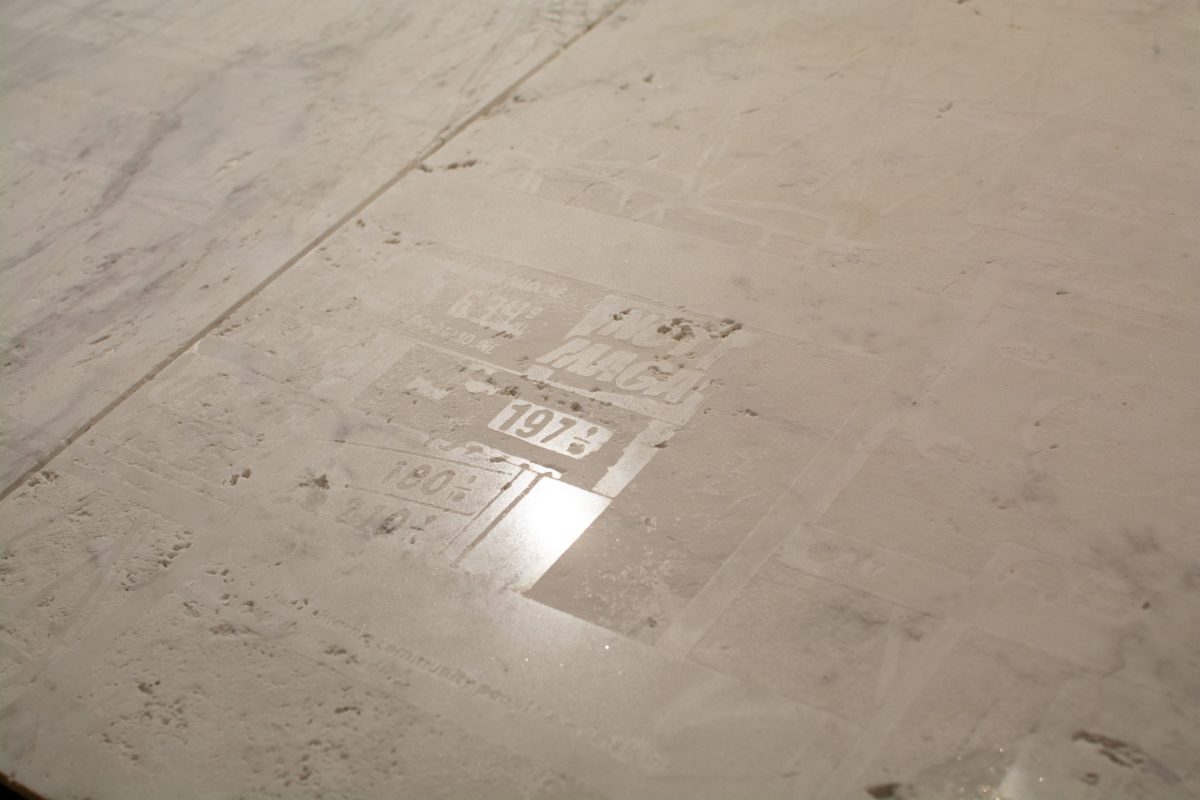
Foto: Jannes Jaeger
Lukas Liese, Cousin Maria, carrara marble, infrared heating system, heat 120 cm x 75 cm x 4 cm, 2023
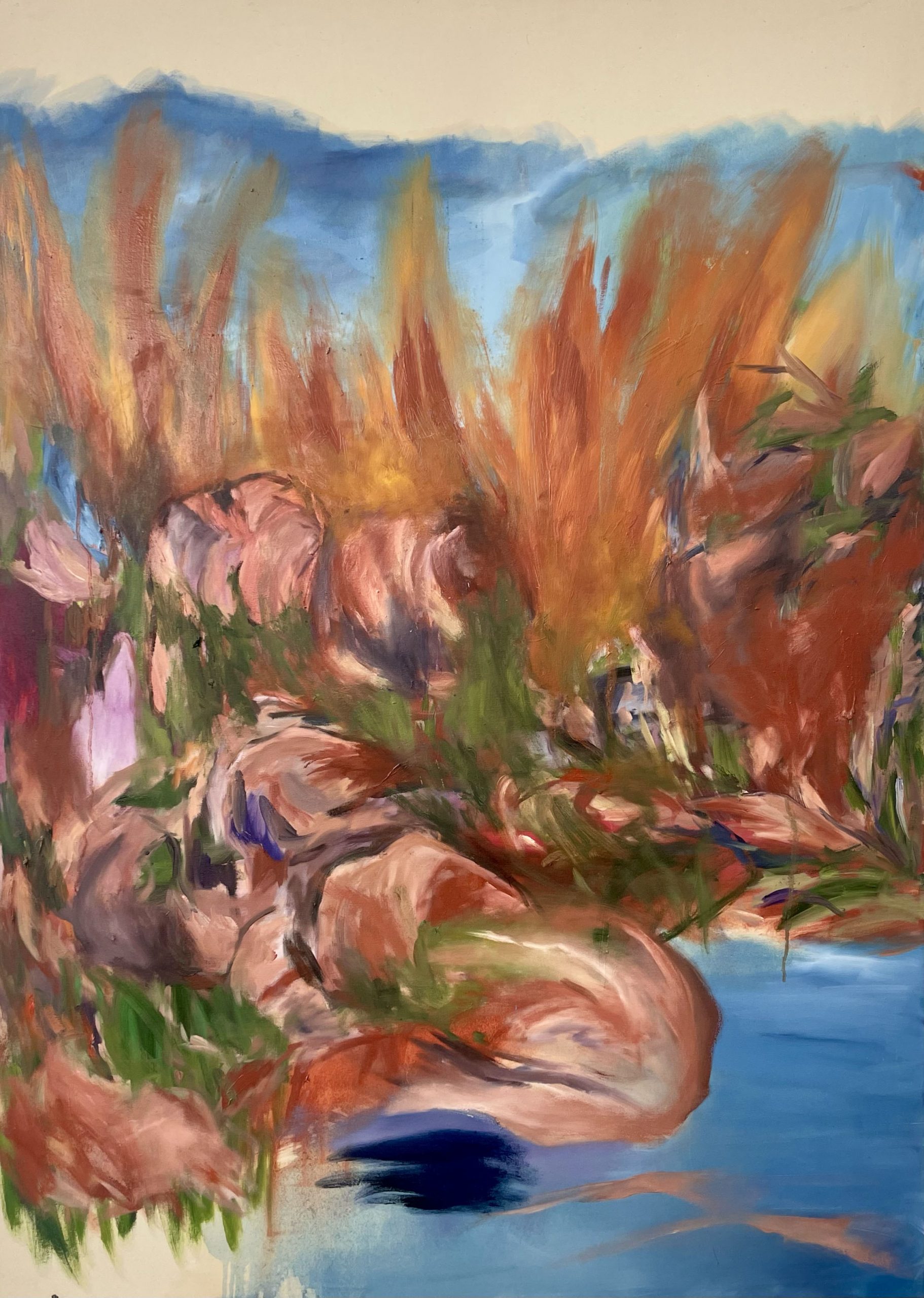
Minh Kah Le, In my burning garden I saw you dying twiceoil on canvas, 140x100cm, 2023

Ren Han, Untitled (Volcano #1-8), from the series Disaster Landscape, violettes Kohlepapier, Pastellfarben, 83.5x 65 cm/27.9x 19.2 cm, 2023
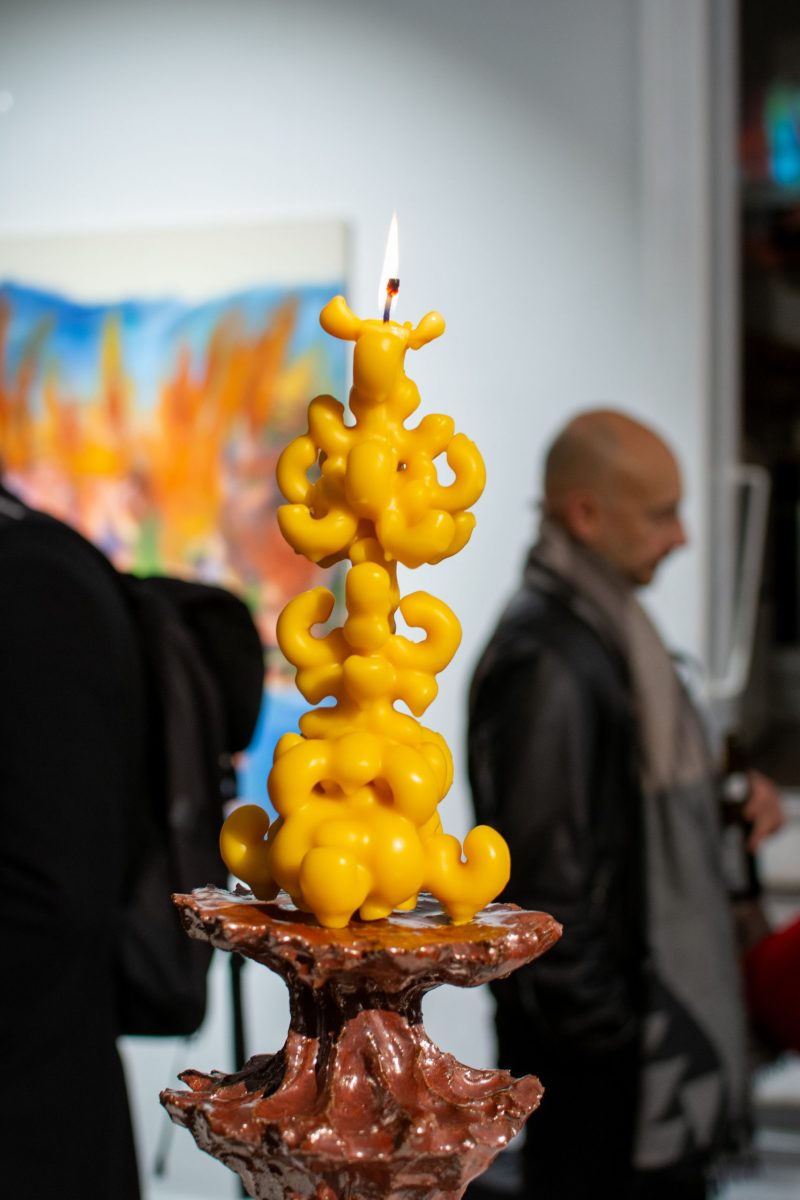
Foto: Jannes Jaeger
Corinna J. Duschl, Zündl (Kindling), Beeswax, 2024

© Jannes Jaeger
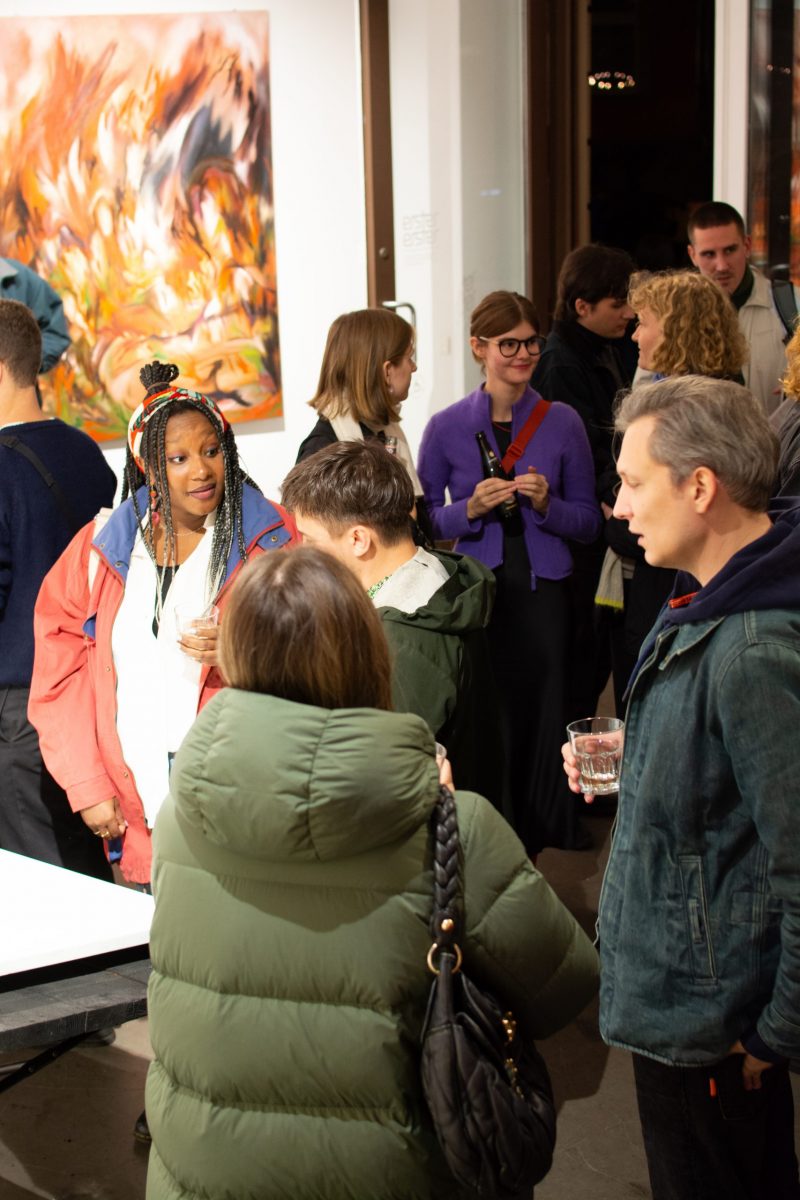
© Jannes Jaeger
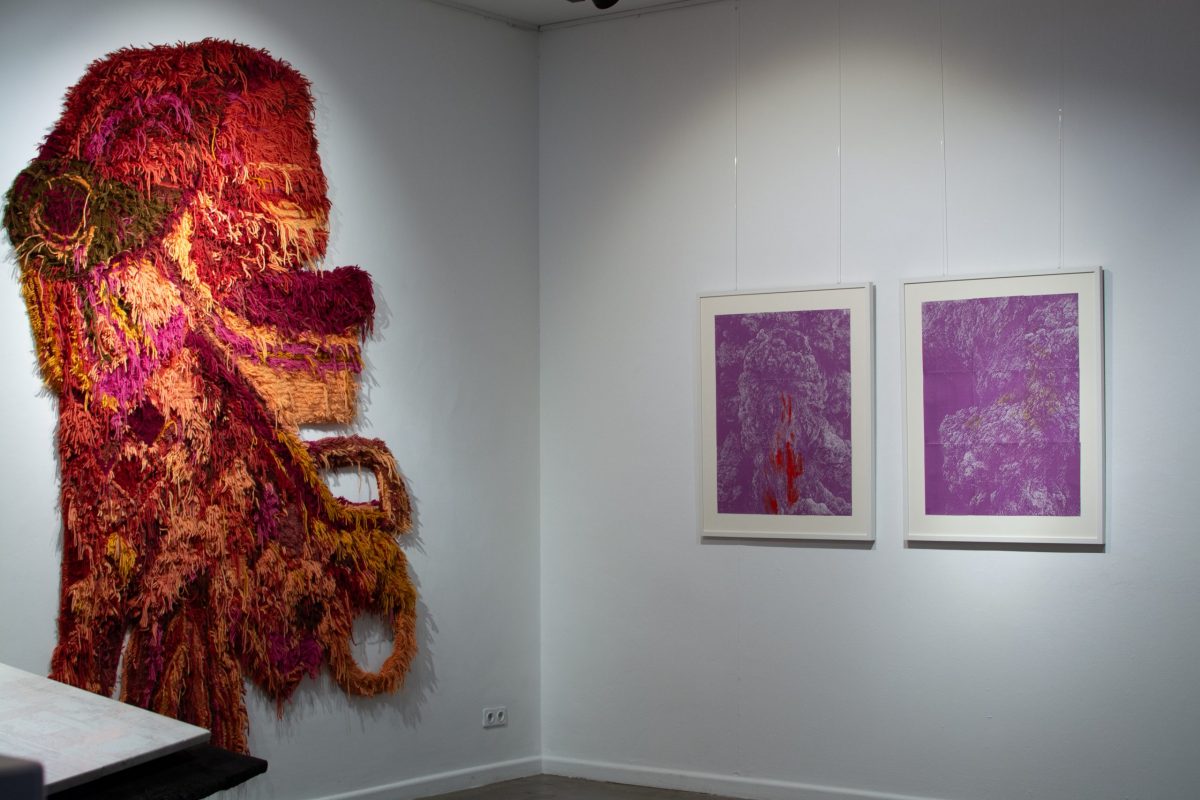
© Jannes Jaeger

© Jannes Jaeger
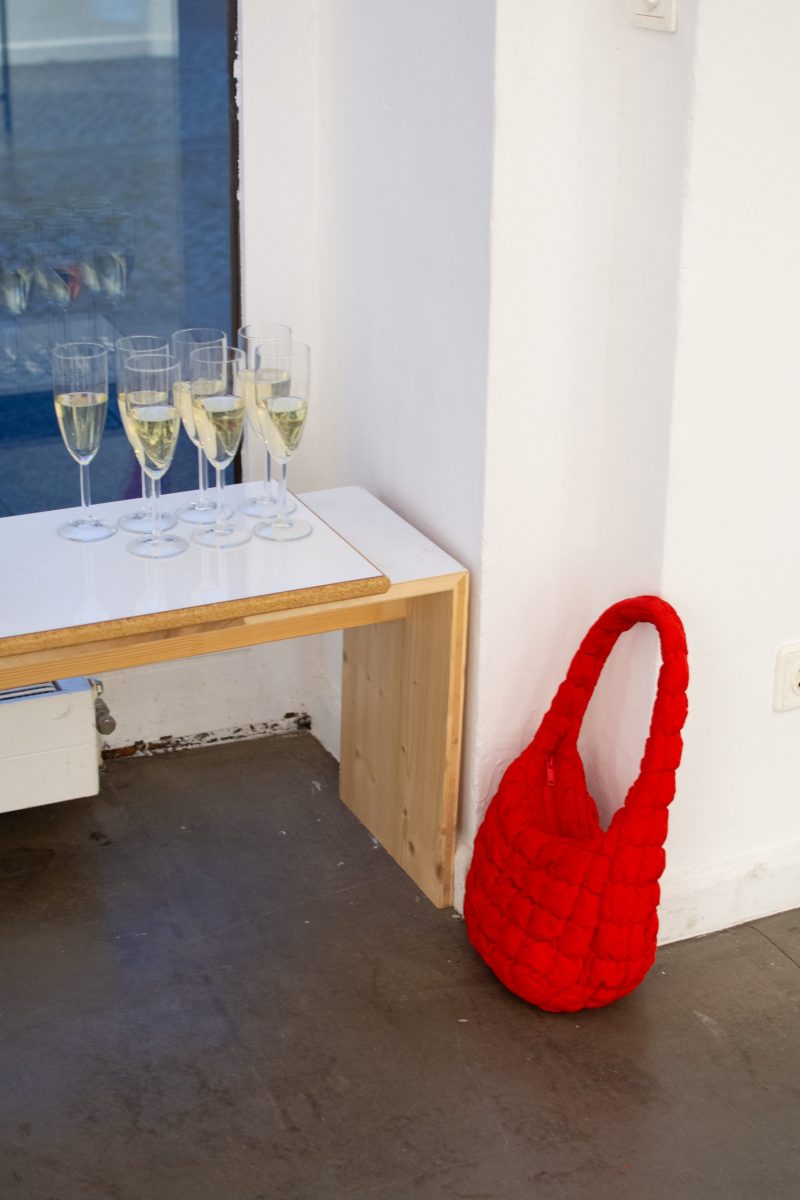
© Jannes Jaeger
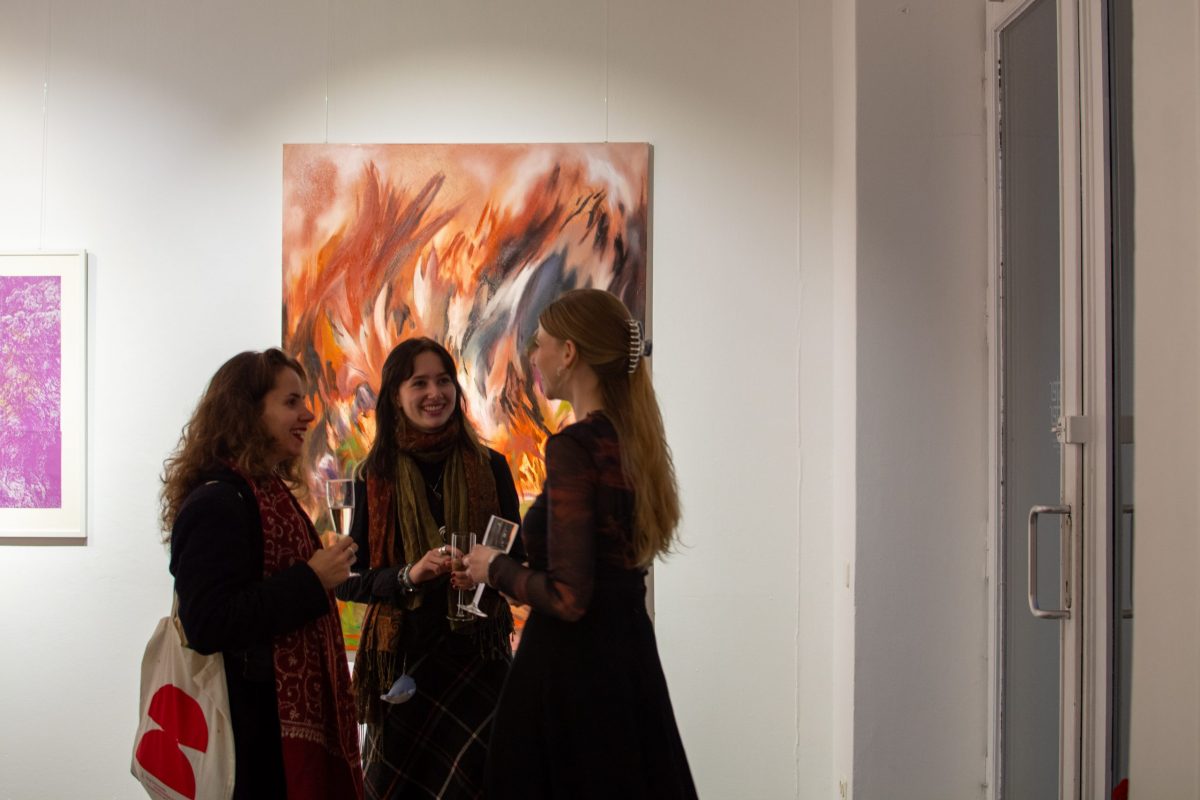
© Jannes Jaeger
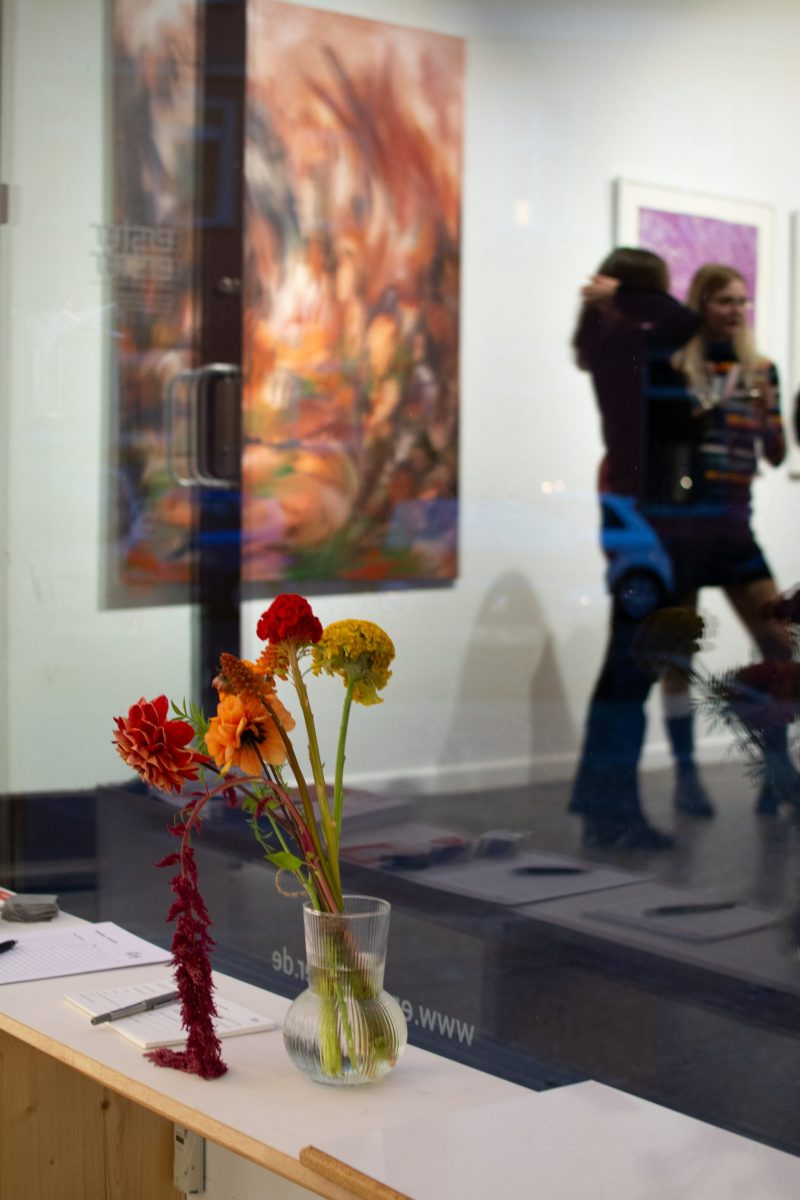
© Jannes Jaeger
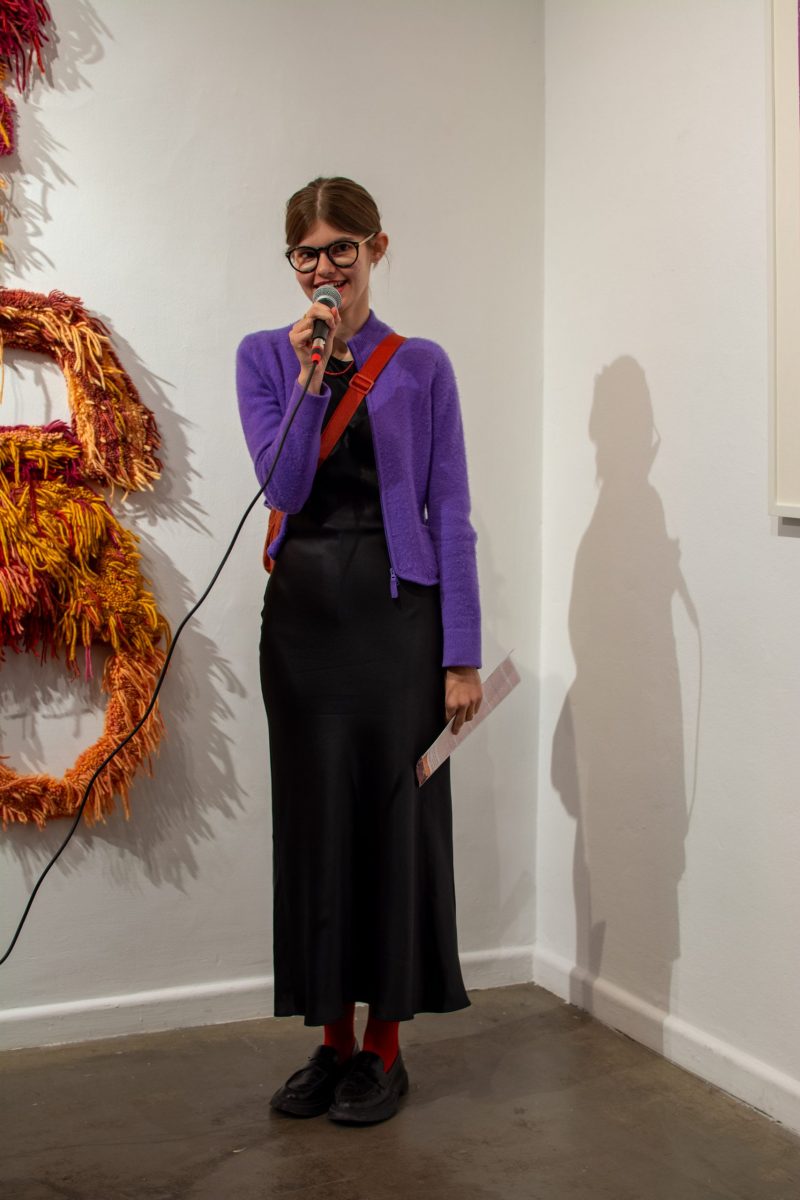
© Jannes Jaeger
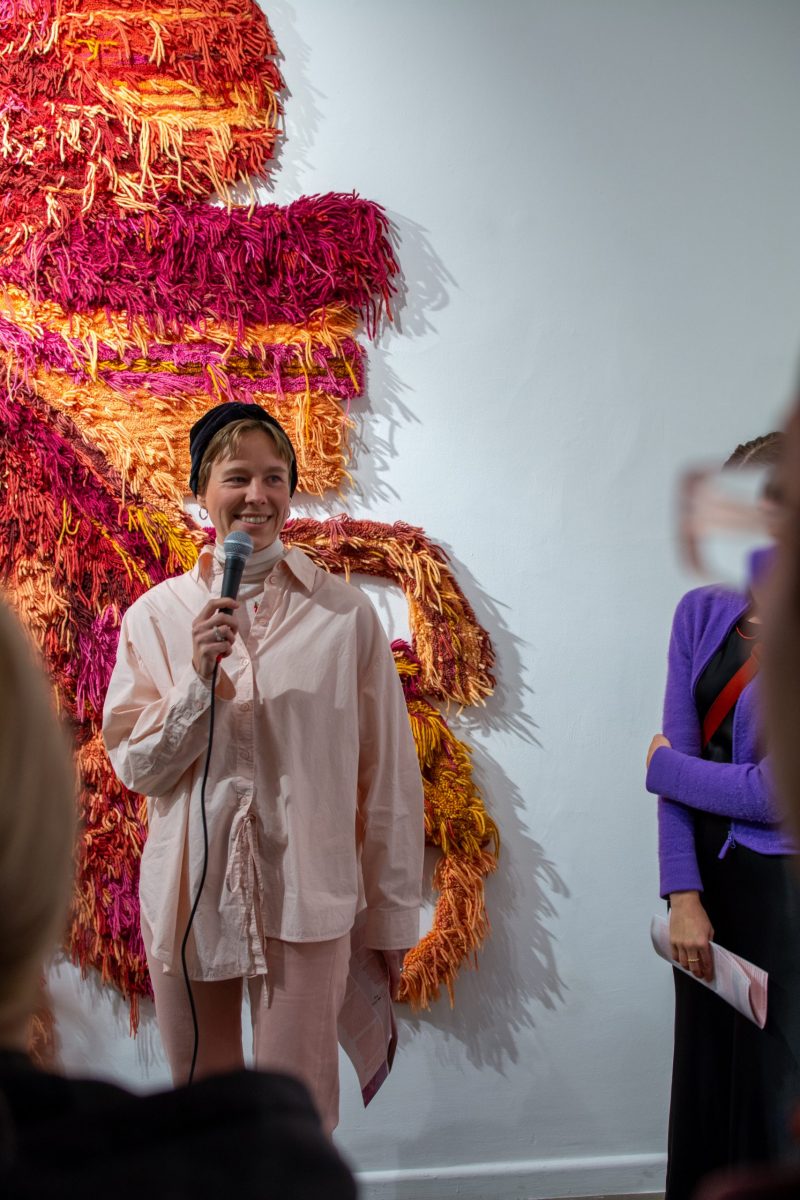
© Jannes Jaeger

© Jannes Jaeger
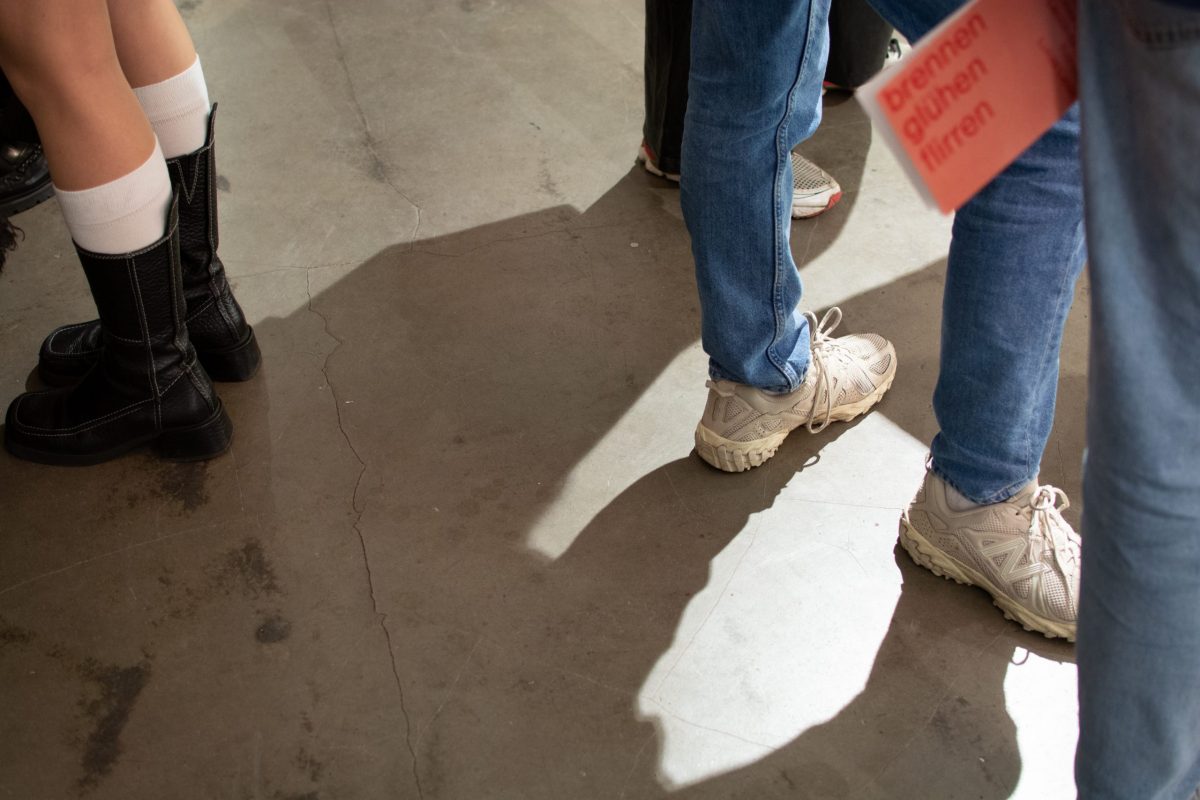
© Jannes Jaeger
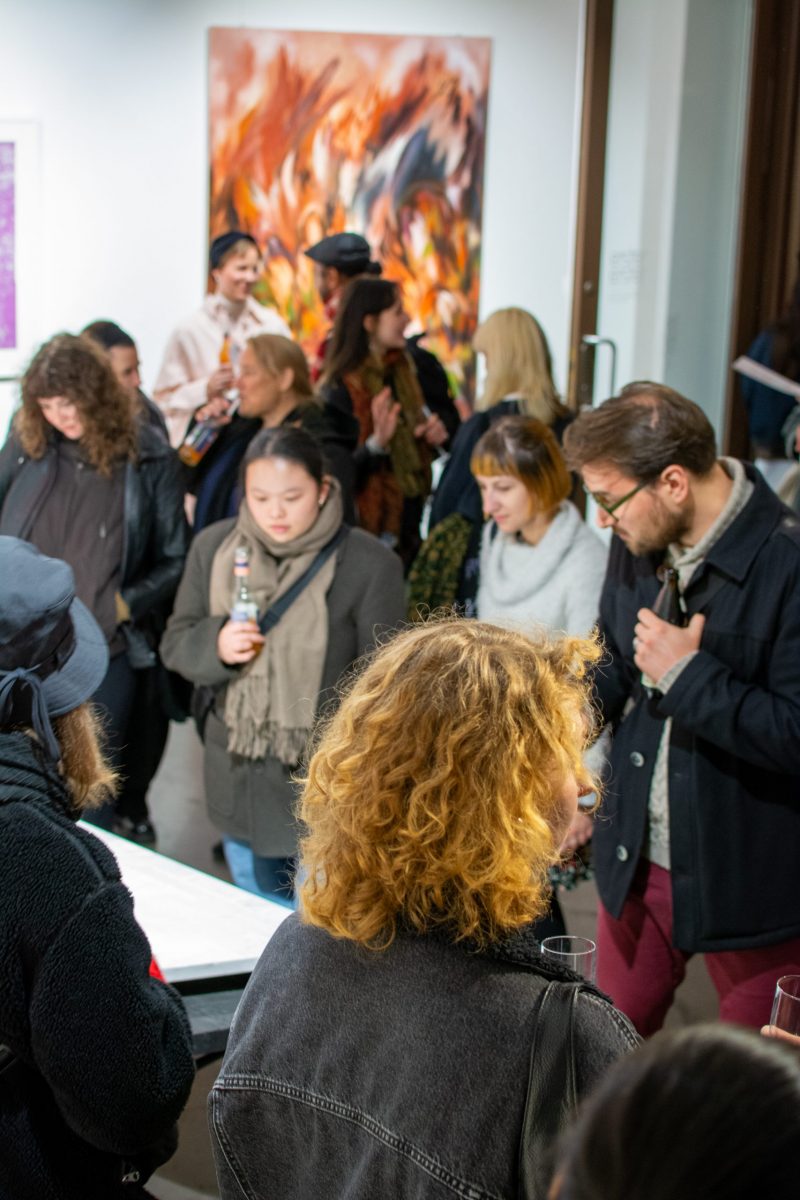
© Jannes Jaeger
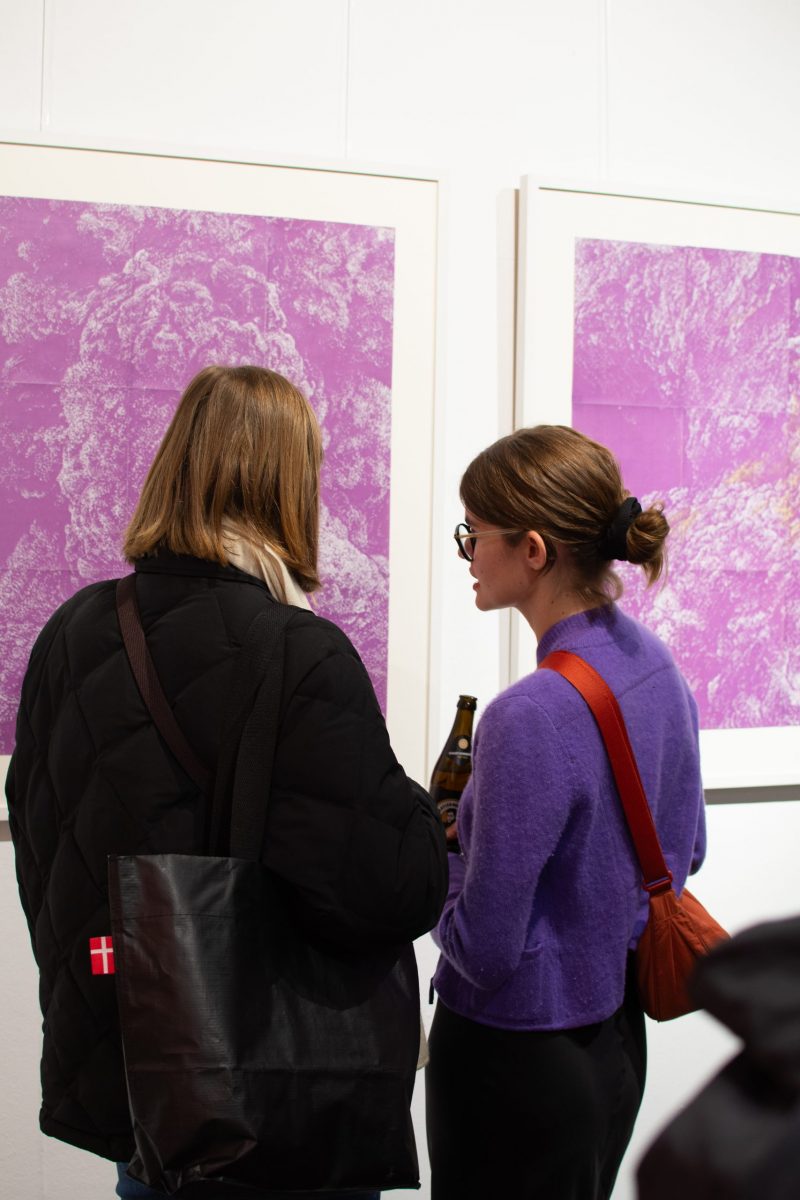
© Jannes Jaeger
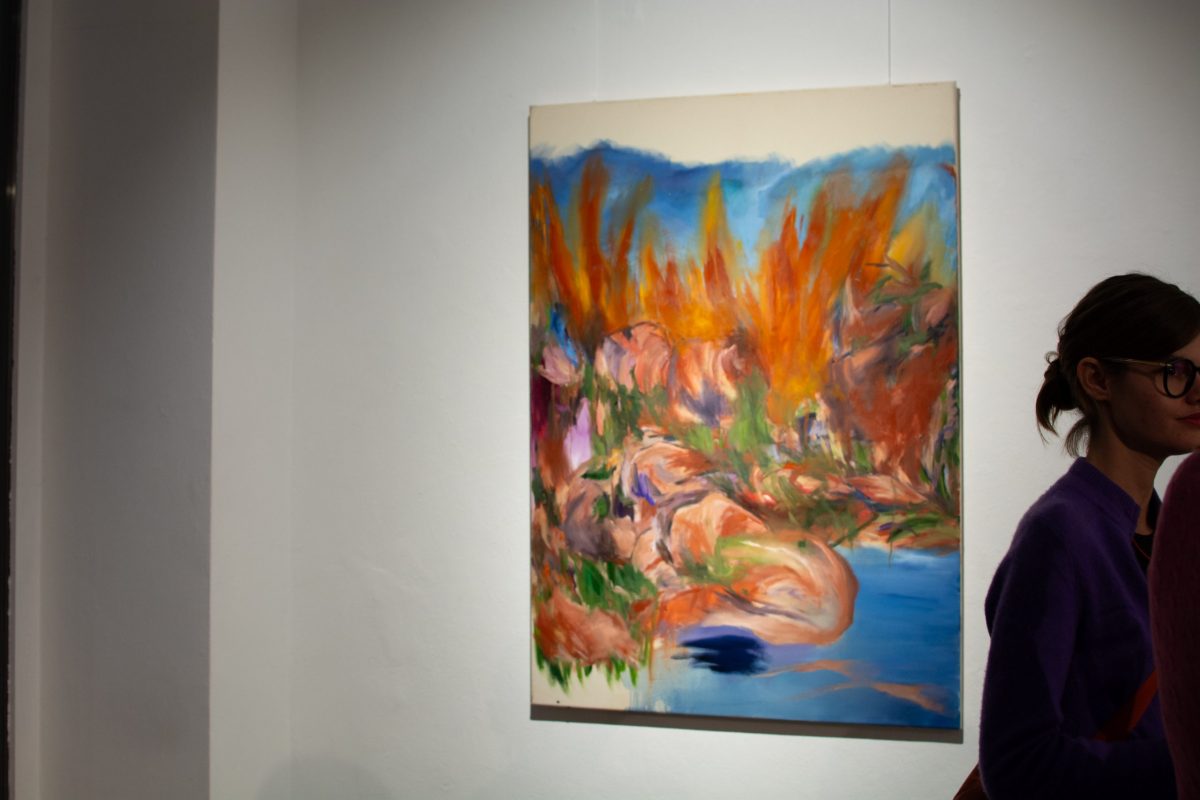
© Jannes Jaeger
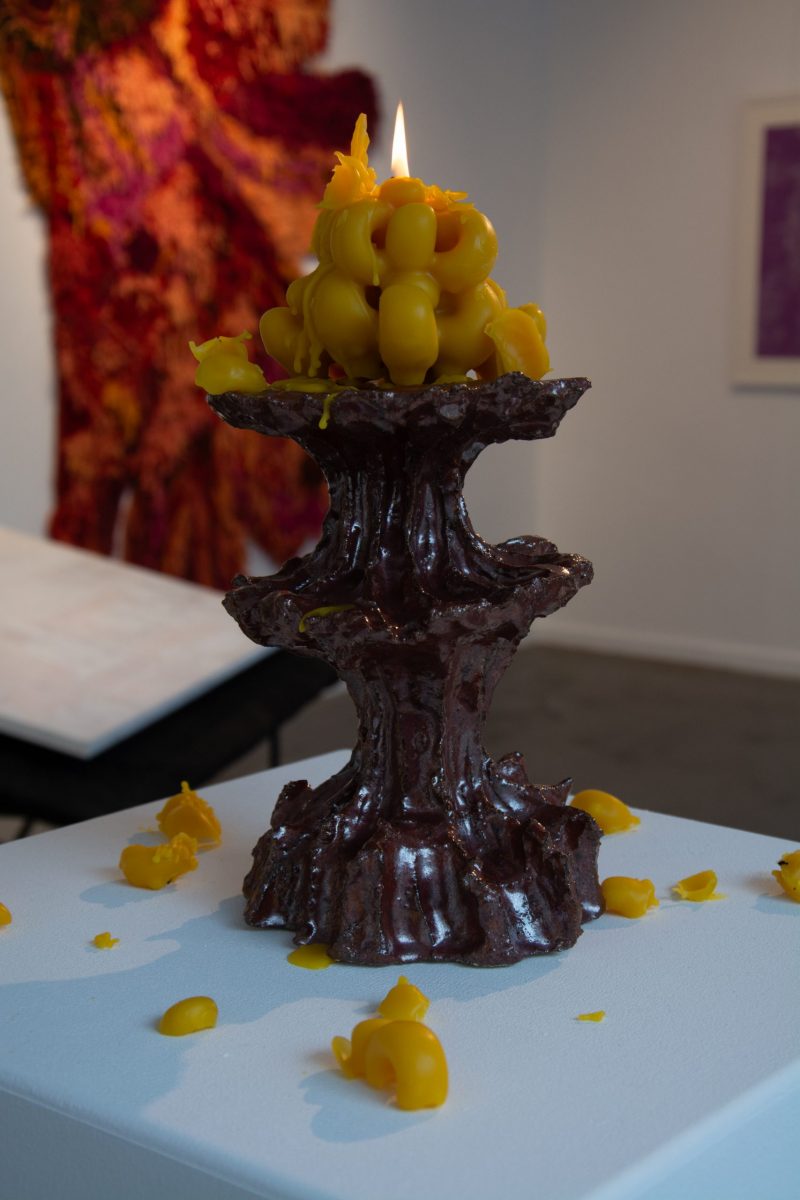
© Jannes Jaeger
